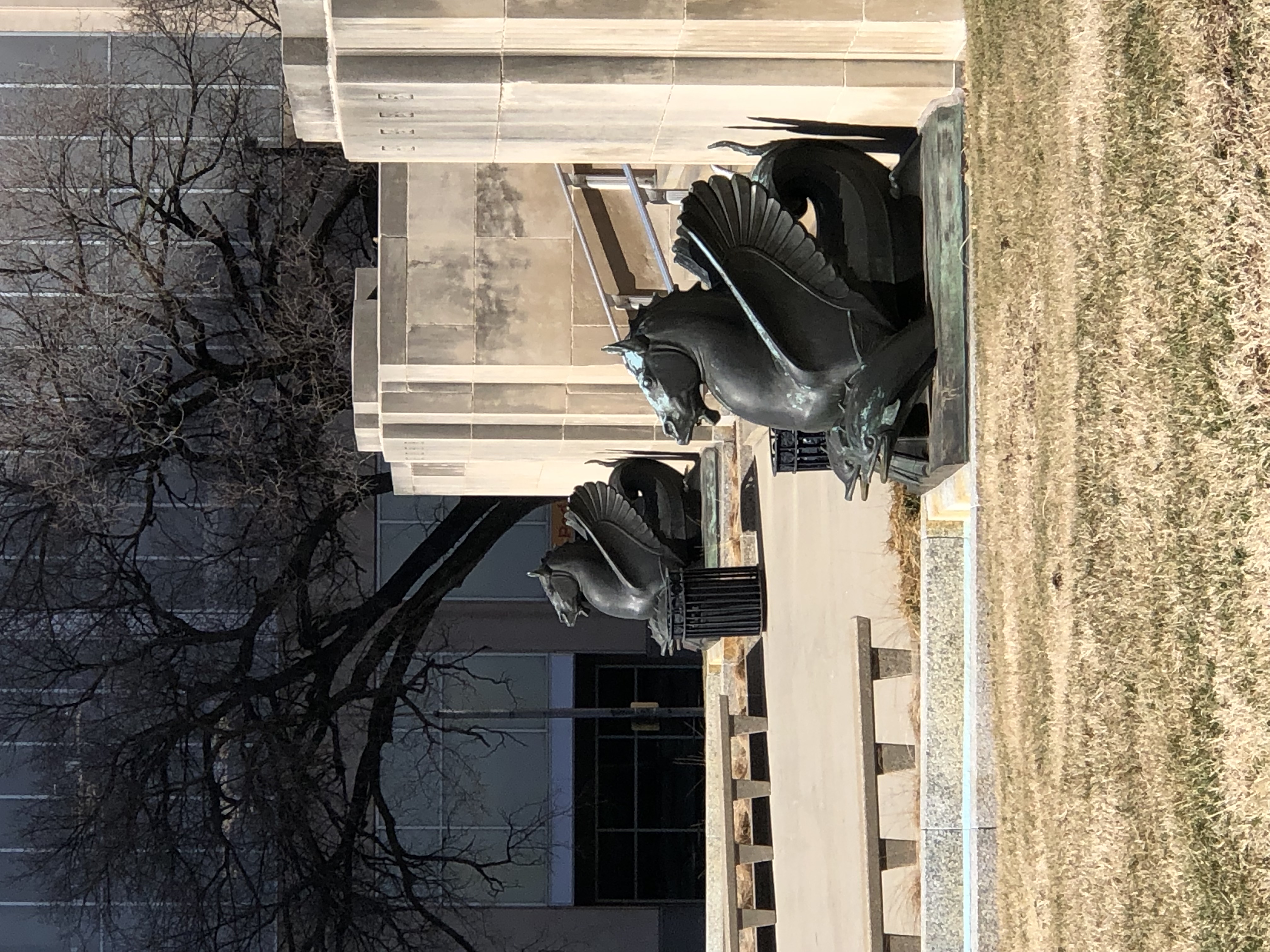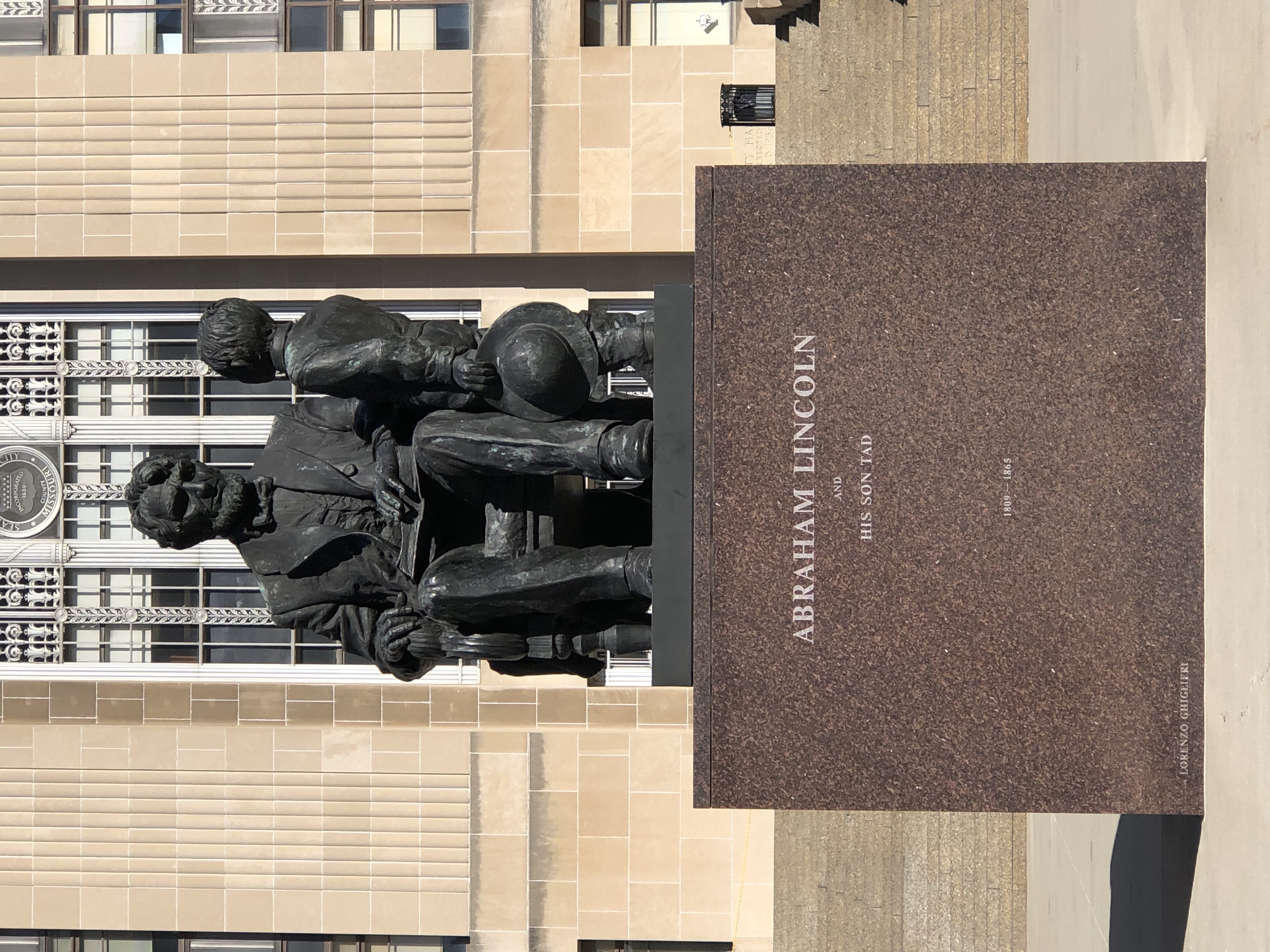Kansas City City Hall on:
[Wikipedia]
[Google]
[Amazon]
Kansas City City Hall is the official seat of

 At the top of the six story base on the exterior of the building, windows are replaced with a frieze of relief sculptures depicting the early settlement and growth of the Kansas City area. Sculptures on the exterior of the building include those by
At the top of the six story base on the exterior of the building, windows are replaced with a frieze of relief sculptures depicting the early settlement and growth of the Kansas City area. Sculptures on the exterior of the building include those by
government
A government is the system or group of people governing an organized community, generally a state.
In the case of its broad associative definition, government normally consists of legislature, executive, and judiciary. Government is a ...
for the city of Kansas City, Missouri
Kansas City (abbreviated KC or KCMO) is the largest city in Missouri by population and area. As of the 2020 census, the city had a population of 508,090 in 2020, making it the 36th most-populous city in the United States. It is the central ...
. Located in downtown
''Downtown'' is a term primarily used in North America by English speakers to refer to a city's sometimes commercial, cultural and often the historical, political and geographic heart. It is often synonymous with its central business distric ...
, it is a 29-story skyscraper with an observation deck. Completed in 1937, the building has a Beaux-Arts and Art-Deco
Art Deco, short for the French ''Arts Décoratifs'', and sometimes just called Deco, is a style of visual arts, architecture, and product design, that first appeared in France in the 1910s (just before World War I), and flourished in the United ...
style with numerous architectural features and ornamentation throughout. One Kansas City Place
One Kansas City Place is the tallest building in the U.S. state of Missouri. It is located in Downtown Kansas City, Missouri, bounded by 12th Street to the north, Baltimore Avenue to the west, and Main Street to the east. Built in 1988, this 18 ...
was modeled as a 1980s version of City Hall, and is the tallest building in Kansas City.
History
Situated on a city block bounded by E. 11th Street, E. 12th Street, Oak Street, and Locust Street, this 29-story structure was designed byWight and Wight
Wight and Wight, known also as Wight & Wight, was an architecture firm in Kansas City, Missouri consisting of the brothers Thomas Wight (September 17, 1874 – October 6, 1949) and William Wight (January 22, 1882 – October 29, 1947) who d ...
in the Neo-Classic and Beaux-Arts architectural style and built to replace and expand an earlier city hall. It is the third city hall since the incorporation of the City of Kansas in 1853. Construction of the building lasted for 22 months and the concrete was supplied by then-political boss Tom Pendergast
Thomas Joseph Pendergast (July 22, 1872 – January 26, 1945), also known as T. J. Pendergast, was an American political boss who controlled Kansas City and Jackson County, Missouri, from 1925 to 1939.
Pendergast only briefly held elected ...
. Its location has served as the center of city government since 1937. When it was completed, it was the tallest building in the city. It is currently the third-tallest building in the city and one of the tallest city halls in the United States. The exterior features Indiana limestone. An underground parking garage extends under the south lawn. Several types of marble enhance the building’s interior design, including Pyrenees marble from southwestern France, travertine marble from Tivoli, Italy
Tivoli ( , ; la, Tibur) is a town and in Lazio, central Italy, north-east of Rome, at the falls of the Aniene river where it issues from the Sabine hills. The city offers a wide view over the Roman Campagna.
History
Gaius Julius Solinu ...
, and Verde antique marble from Vermont
Vermont () is a state in the northeast New England region of the United States. Vermont is bordered by the states of Massachusetts to the south, New Hampshire to the east, and New York to the west, and the Canadian province of Quebec to ...
. Some of the woods are oak and walnut. The total cost of construction was approximately $6 million, which far exceeds the $4 million bond monies allotted for the project.
Features
Interior
The building hasArt-Deco
Art Deco, short for the French ''Arts Décoratifs'', and sometimes just called Deco, is a style of visual arts, architecture, and product design, that first appeared in France in the 1910s (just before World War I), and flourished in the United ...
details and ornamentation. This is particularly evident within the building. The entrance interior has elaborate marble stairways and bronze architectural features honoring the history of Kansas City. Myriad interior details include sculpted brass elevator doors depicting the four major modes of transportation that serve Kansas City, elaborate light fixtures in the lobby and elsewhere, and custom brass doorknob plates.
Exterior

 At the top of the six story base on the exterior of the building, windows are replaced with a frieze of relief sculptures depicting the early settlement and growth of the Kansas City area. Sculptures on the exterior of the building include those by
At the top of the six story base on the exterior of the building, windows are replaced with a frieze of relief sculptures depicting the early settlement and growth of the Kansas City area. Sculptures on the exterior of the building include those by C. Paul Jennewein
Carl Paul Jennewein (December 2, 1890 – February 22, 1978) was a German-born American sculptor.
Early career
Jennewein was born in Stuttgart in Germany. At the age of seventeen, he immigrated to the United States in 1907.
He was apprentic ...
, Ulric Ellerhusen
Ulric Henry Ellerhusen (1879–1957) first name variously cited as Ulrich or Ulrik, surname sometimes cited as Ellerhousen) was a German-American sculptor and teacher best known for his architectural sculpture.
Ellerhusen was born on April 7, 1879 ...
, and Walker Hancock
Walker Kirtland Hancock (June 28, 1901 – December 30, 1998) was an American sculptor and teacher. He created notable monumental sculptures, including the Pennsylvania Railroad World War II Memorial (1950–52) at 30th Street Station in Philadel ...
. Images in the panels of the building include Senator Thomas Hart Benton, Benoist Troost, Kersey Coates
Kersey Coates (September 15, 1823 – April 24, 1887) was a businessman from Kansas City, in the U.S. state of Missouri, who developed Quality Hill, founded the Kansas City Board of Trade, and was among those who attracted the Hannibal & St. Jo ...
, Lewis and Clark
Lewis may refer to:
Names
* Lewis (given name), including a list of people with the given name
* Lewis (surname), including a list of people with the surname
Music
* Lewis (musician), Canadian singer
* "Lewis (Mistreated)", a song by Radiohead ...
, the Chouteau trading post, and the Santa Fe Trail
The Santa Fe Trail was a 19th-century route through central North America that connected Franklin, Missouri, with Santa Fe, New Mexico. Pioneered in 1821 by William Becknell, who departed from the Boonslick region along the Missouri River, th ...
.
To the south of the building are fountains with two ornamental sea horses, dolphins, and seashells. City employees named the sea horses "Lug" (on the west side) and "Cut" (on the east side) soon after the fountain's dedication. They were named for lugs of the political machine and cuts in pay for city workers in the 1930s. A statue of Abraham Lincoln
Abraham Lincoln ( ; February 12, 1809 – April 15, 1865) was an American lawyer, politician, and statesman who served as the 16th president of the United States from 1861 until his assassination in 1865. Lincoln led the nation thro ...
and his son Tad was sculpted by Lorenzo Ghiglieri
Lorenzo Ghiglieri (November 25, 1931 – January 25, 2020) was an American painter and sculptor. The Portland, Oregon, newspaper ''Willamette Week'' referred to Ghiglieri as "one of the Northwest's best-recognized and most prolific bronze sculpto ...
.
The top floor features an observation deck.
See also
*List of tallest buildings in Kansas City, Missouri
The list of tallest buildings in Kansas City, Missouri focuses on the boom of higher residential occupancy downtown. The modernization of the skyline includes the Kansas City Power and Light Building, Municipal Auditorium (Kansas City), Municipa ...
References
{{Reflist 1937 establishments in Missouri Art Deco architecture in Missouri City halls in Missouri Downtown Kansas City Government buildings completed in 1937 Government of Kansas City, Missouri Skyscraper office buildings in Kansas City, Missouri